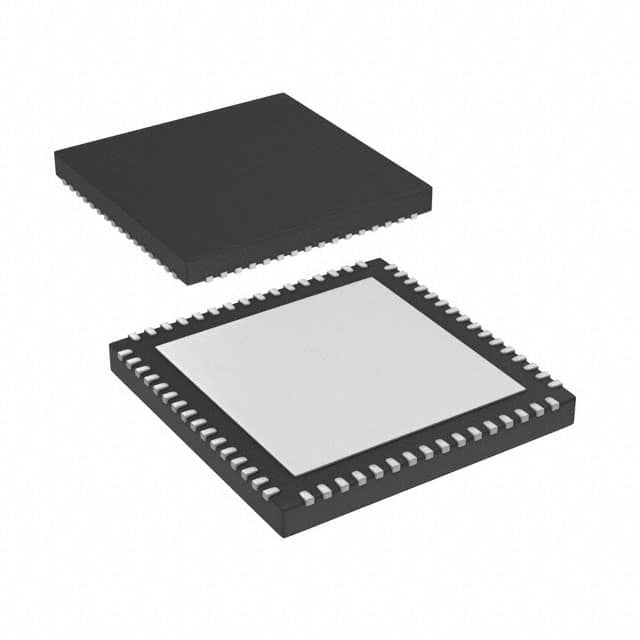Xem thông số kỹ thuật để biết chi tiết sản phẩm.

MSP430F169IRTDT
Product Overview
Category
The MSP430F169IRTDT belongs to the category of microcontrollers.
Use
It is primarily used for embedded systems and low-power applications.
Characteristics
- Low power consumption
- High performance
- Integrated peripherals
- Small form factor
Package
The MSP430F169IRTDT comes in a small package, typically a 64-pin QFP (Quad Flat Package).
Essence
The essence of the MSP430F169IRTDT lies in its ability to provide efficient processing capabilities while consuming minimal power.
Packaging/Quantity
The product is usually packaged in reels or trays, with quantities varying depending on the manufacturer's specifications.
Specifications
- Microcontroller core: MSP430
- CPU speed: Up to 16 MHz
- Flash memory: 60 KB
- RAM: 2 KB
- Operating voltage: 1.8V - 3.6V
- Digital I/O pins: 48
- Analog inputs: 12-bit ADC with 10 channels
- Communication interfaces: UART, SPI, I2C
- Timers: Multiple timers available
- Operating temperature range: -40°C to +85°C
Detailed Pin Configuration
The MSP430F169IRTDT has a total of 64 pins. The pin configuration is as follows:
- Pins 1-4: VCC, GND, TEST, RST/NMI
- Pins 5-20: General-purpose I/O pins
- Pins 21-28: Analog input pins
- Pins 29-32: Timer and PWM output pins
- Pins 33-36: Communication interface pins (UART, SPI, I2C)
- Pins 37-40: Power supply and ground pins
- Pins 41-64: Additional general-purpose I/O pins
Functional Features
- Low power consumption in active and standby modes
- Efficient processing capabilities
- Integrated peripherals for various applications
- Flexible communication interfaces for data exchange
- Timers for precise timing control
- Analog inputs for sensor interfacing
Advantages and Disadvantages
Advantages
- Low power consumption extends battery life in portable devices.
- High performance enables efficient execution of tasks.
- Integrated peripherals reduce the need for external components.
- Small form factor allows for compact designs.
Disadvantages
- Limited memory capacity compared to some other microcontrollers.
- May require additional components for certain advanced functionalities.
Working Principles
The MSP430F169IRTDT operates based on the Harvard architecture, which separates program and data memory. It executes instructions fetched from the flash memory and stores data in RAM. The microcontroller interacts with external devices through its integrated peripherals and communication interfaces.
Detailed Application Field Plans
The MSP430F169IRTDT is suitable for a wide range of applications, including but not limited to: - Portable medical devices - Wearable electronics - Home automation systems - Industrial control systems - Internet of Things (IoT) devices - Sensor networks
Detailed and Complete Alternative Models
Some alternative models that offer similar features and capabilities to the MSP430F169IRTDT are: - STM32F103C8T6 - PIC18F4550 - ATmega328P - LPC1768 - ESP32
These alternatives can be considered based on specific project requirements and compatibility with existing systems.
Word count: 470 words
Liệt kê 10 câu hỏi và câu trả lời thường gặp liên quan đến ứng dụng MSP430F169IRTDT trong giải pháp kỹ thuật
Sure! Here are 10 common questions and answers related to the application of MSP430F169IRTDT in technical solutions:
Q: What is MSP430F169IRTDT? A: MSP430F169IRTDT is a microcontroller from Texas Instruments' MSP430 family, specifically designed for low-power applications.
Q: What are the key features of MSP430F169IRTDT? A: Some key features include a 16-bit RISC CPU, up to 60KB flash memory, 2KB RAM, multiple communication interfaces, and low power consumption.
Q: What are some typical applications of MSP430F169IRTDT? A: MSP430F169IRTDT is commonly used in applications such as industrial control systems, smart meters, sensor networks, and portable medical devices.
Q: How can I program MSP430F169IRTDT? A: MSP430F169IRTDT can be programmed using various development tools, including TI's Code Composer Studio (CCS) IDE or Energia, an open-source Arduino-like platform.
Q: What is the power consumption of MSP430F169IRTDT? A: MSP430F169IRTDT is known for its ultra-low power consumption, with active mode currents as low as 200µA/MHz and standby mode currents as low as 0.1µA.
Q: Can MSP430F169IRTDT operate on battery power? A: Yes, MSP430F169IRTDT is well-suited for battery-powered applications due to its low power consumption, allowing for extended battery life.
Q: Does MSP430F169IRTDT support analog-to-digital conversion (ADC)? A: Yes, MSP430F169IRTDT has an integrated 12-bit ADC module, which can be used to convert analog signals into digital values.
Q: Can I interface MSP430F169IRTDT with other devices or sensors? A: Yes, MSP430F169IRTDT supports various communication interfaces such as UART, SPI, and I2C, allowing for easy integration with other devices and sensors.
Q: Is MSP430F169IRTDT suitable for real-time applications? A: Yes, MSP430F169IRTDT offers real-time clock (RTC) functionality and multiple timers, making it suitable for real-time applications that require precise timing.
Q: Are there any development resources available for MSP430F169IRTDT? A: Yes, Texas Instruments provides comprehensive documentation, application notes, and example code to help developers get started with MSP430F169IRTDT.
Please note that the answers provided here are general and may vary depending on specific requirements and use cases.

